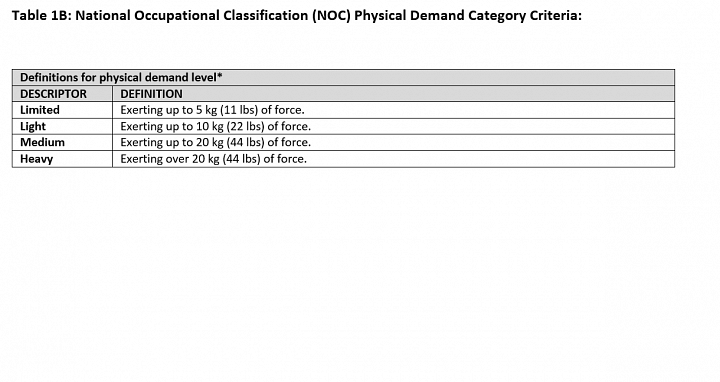 In most any industry in North America it is common for employers to use Physical Demands Analysis (PDA) or Job Demands Analysis (JDA) documents as part of their occupational health and safety program, and as a registry of physical exertions for job activities. Ultimately, a PDA or JDA can be used to determine the requirements and skills needed from personnel during hiring, identify key actions for jobs, and identify risks posed during various jobs/tasks.
In most any industry in North America it is common for employers to use Physical Demands Analysis (PDA) or Job Demands Analysis (JDA) documents as part of their occupational health and safety program, and as a registry of physical exertions for job activities. Ultimately, a PDA or JDA can be used to determine the requirements and skills needed from personnel during hiring, identify key actions for jobs, and identify risks posed during various jobs/tasks.
A PDA or JDA is often used to review accidents and injuries to employees. The details of the physical job requirements can help to review specific cases, provide information for disability managers and health care professionals assessing injury and return to work, and identify where modifications to work are possible to allow employees with limitations/injuries to safely return to their jobs.
In many instances, hiring, worker’s compensation reviews and decisions, and return to work processes are strongly influenced by a PDA/JDA and the interpretations of the data help within. The difficulty of a job or task is rated using measures taken from a PDA/JDA and fit within a category of “limited”, “light”, “medium” or “heavy” work.
Many times, an incoming worker, or a worker attempting to return to work after an injury or health issue, will be assessed by a health care professional to determine at which level they can perform manual operations safely. For example, a health care professional may indicate that:
“The worker can perform tasks and duties that are within or below a “Light” category of physical exertion.”
Yet, the terms “limited”, “light”, “medium”, and “heavy” are not always assigned with the same criteria between different companies and regions. In Canada, each province’s workplace health and safety advocates and worker’s compensation board set out the criteria to use. It is either the Directory of Occupational Titles (DOT, created in the USA) or the National Occupational Classification (NOC, created in Canada). As you can see in the tables below (Table 1A and 1B), there are notable differences in these classification criterions. Specifically, the NOC only considers weight and level of force exertion and does not include any consideration of frequency of the activity. In Alberta, the Worker’s Compensation Board has recently moved to using the NOC criteria. This is also the case in several other provinces, but the DOT is still used in Nova Scotia, Prince Edward Island, New Brunswick and Saskatchewan.
There are some specific limitations to using the NOC classification, as it only considers weight or force exertion, and does not consider frequency, posture, environment, hours of work, length of shift and other key factors. At the same time, the DOT does consider frequency in the classification (which is an improvement over the NOC), but it does miss many other key risk factor areas for sprain/strain injuries.
It seems that neither of these classification criteria are perfect systems or representations. In future projects we hope to evaluate how using each type of classification system impacts on safety documentation, return to work and key decision making. However, for now, the best advice we can offer is:
Key safety, disability, return to work and health care stakeholders should review the contents of a JDA/PDA to determine the full range of tasks, physical actions and risks employees are exposed to. Using greater detail of information, rather than just the categorical rating of physical demand will allow for more informed decision making.



